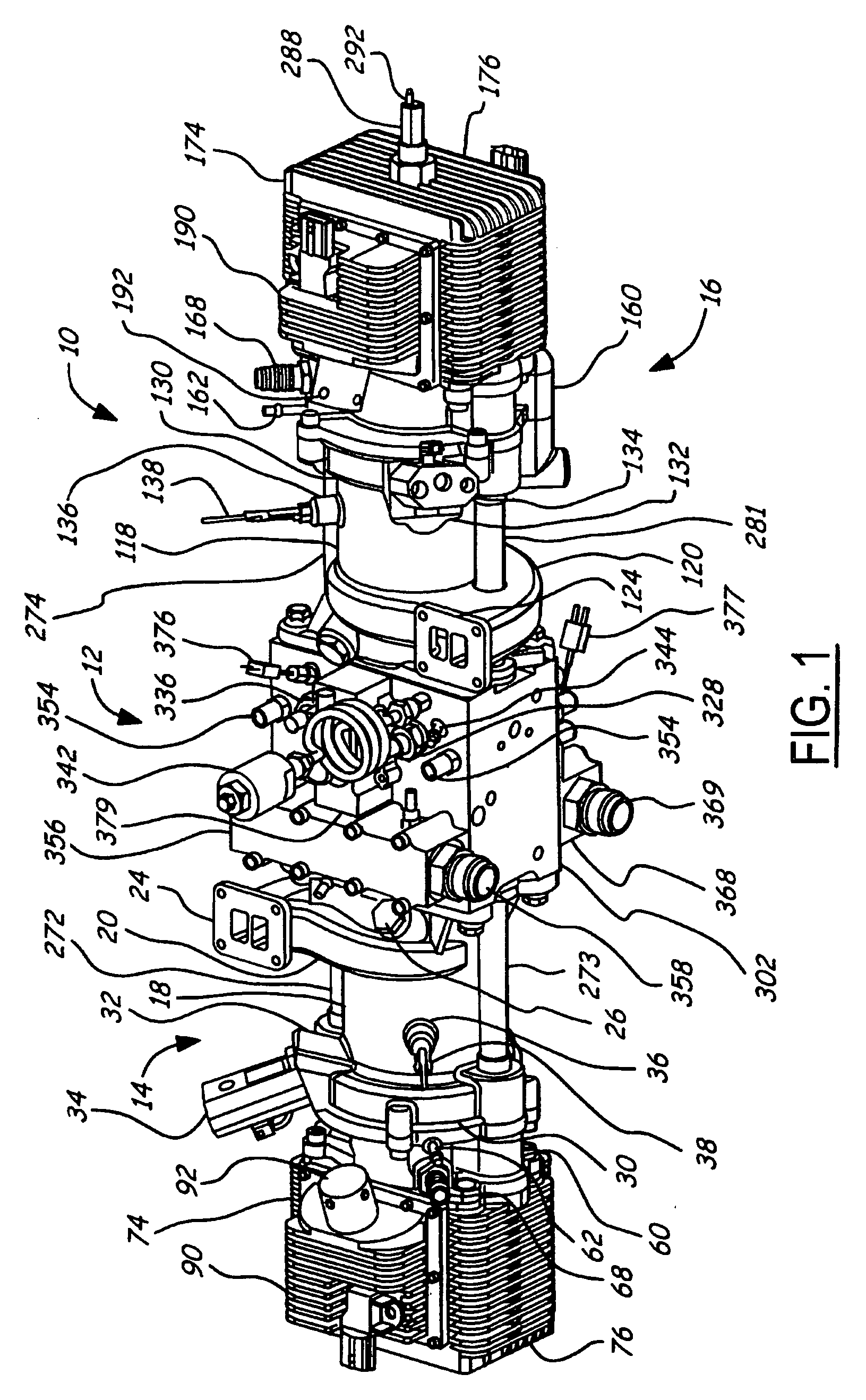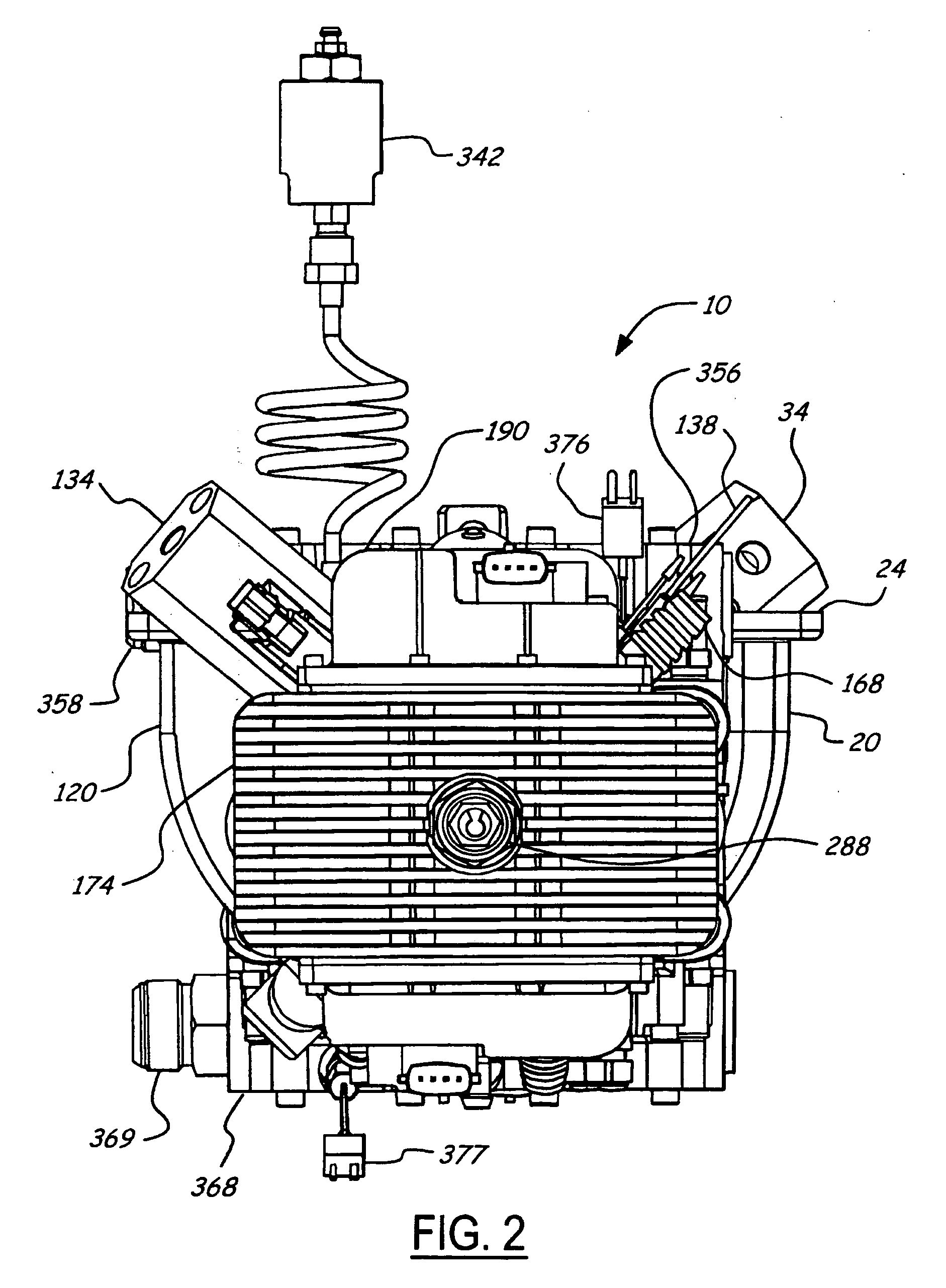Exhaust gas recirculation for a free piston engine
- Summary
- Abstract
- Description
- Claims
- Application Information
AI Technical Summary
Benefits of technology
Problems solved by technology
Method used
Image
Examples
second embodiment
[0114]What distinguishes the second embodiment from the first is that an external EGR system is connected between the exhaust and the air intake. Preferably, the exhaust connection is between the exhaust ports 546 and 547 and the turbine 525 and the air intake connection is between the compressor 597 and the scavenge pumps 74 and 174. A first heat exchanger 598 receives a portion of the exhaust gas from the first engine cylinder 44, cools it and directs it to the intake air stream for the first engine cylinder 44. A second heat exchanger 599 receives a portion of the exhaust gas from the second engine cylinder 144, cools it and directs it to the intake air stream for the second engine cylinder 144. Since a portion of the EGR gas is now coming from the external EGR system, the size and the location of the exhaust ports 546 and 547 will be changed to reduce the amount of internal EGR retained in each engine cylinder 44 and 144.
[0115]Both of the heat exchangers 598 and 599 may be varia...
first embodiment
[0116]The operation of this engine is basically the same as that in the first embodiment except that some of the exhaust gas is diverted to the heat exchangers 598 and 599 and then reintroduced into the cylinders 44 and 144. By cooling some of the exhaust gas that is employed for EGR, the combustion process is slowed. That is, the cooler temperature of the exhaust gas will retard the onset of combustion, which helps to avoid combustion beginning before the pistons have reached their top dead center positions. Thus, energy produced by the combustion is not wasted in stopping and reversing the direction of the pistons.
[0117]Although the fluid employed for the energy storage medium and the control valve has been disclosed in both embodiments as hydraulic oil, other suitable fluids may also be employed if so desired. For example, the fluid may be a gas, with a pneumatic energy storage system for the reservoirs. The fluid may be a refrigerant that can be in the liquid or gaseous state. I...
PUM
 Login to View More
Login to View More Abstract
Description
Claims
Application Information
 Login to View More
Login to View More - R&D
- Intellectual Property
- Life Sciences
- Materials
- Tech Scout
- Unparalleled Data Quality
- Higher Quality Content
- 60% Fewer Hallucinations
Browse by: Latest US Patents, China's latest patents, Technical Efficacy Thesaurus, Application Domain, Technology Topic, Popular Technical Reports.
© 2025 PatSnap. All rights reserved.Legal|Privacy policy|Modern Slavery Act Transparency Statement|Sitemap|About US| Contact US: help@patsnap.com



